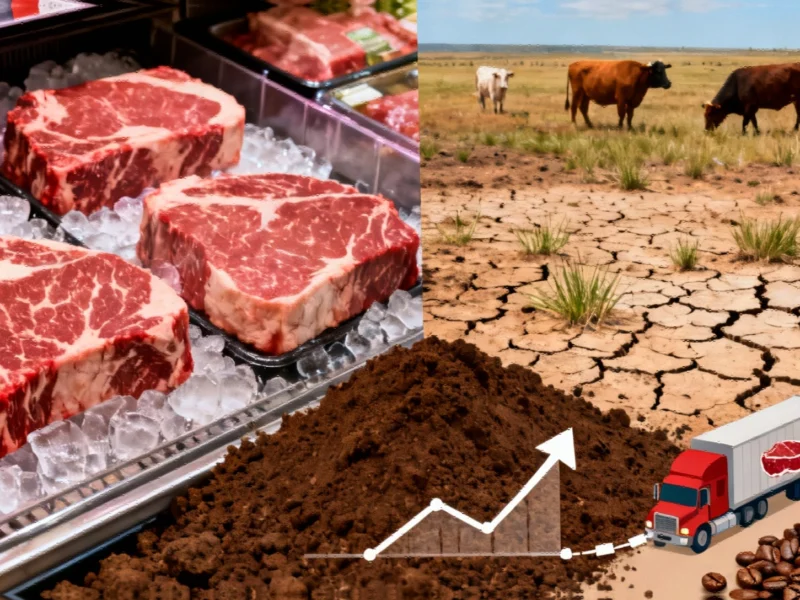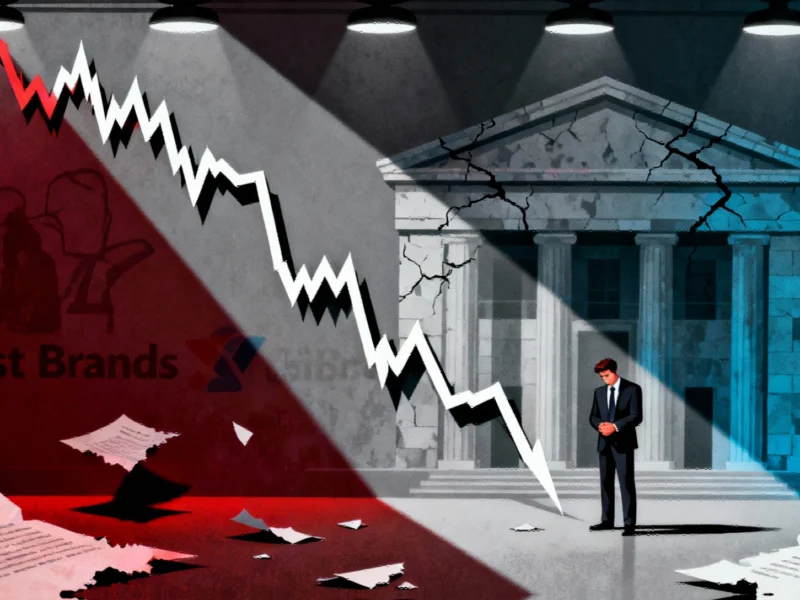Beef Inflation Hits American Consumers
Americans are facing significantly higher beef prices, with ground beef reaching $7.95 per pound on average in August, representing an 8% increase since January, according to reports. The broader beef category has experienced even steeper inflation, climbing 14% over the past year as cattle shortages and production challenges persist across the industry.
Economic Context and Consumer Impact
The consumer price index for all food increased 0.4% month-over-month in August, with beef and veal among the categories experiencing the largest price jumps, according to the Department of Agriculture. Analysts suggest this food inflation is contributing to declining consumer sentiment, with the University of Michigan survey showing Americans’ economic outlook falling for the third consecutive month in October.
Sources indicate Americans expect inflation to rise to 4.6% over the next year, reflecting ongoing concerns about purchasing power and household budgets. The price increases come as consumers face multiple economic pressures, with beef representing one of the most noticeable grocery cost increases.
Cattle Supply Crisis Deepens
The fundamental driver behind rising beef prices appears to be a severe cattle supply shortage. MarketWatch reports that cattle shortages have been fueled by “drought, inflation, labor shortages and market instability,” citing Conner Hackett, general manager at Stemple Creek Ranch in California. The situation has become so acute that weekly cattle slaughter in late July and part of August slowed to its lowest point in 10 years, according to a Department of Agriculture report.
Beef exports have also declined significantly, with 211 million pounds shipped in July representing a 19% year-over-year decrease. While beef imports climbed 13% year-over-year in June, analysts suggest this hasn’t been sufficient to offset domestic production challenges. The Department of Agriculture has reportedly issued slightly downward beef production forecasts for 2025, indicating the supply constraints may persist.
Broader Economic Indicators
The beef price surge occurs within a complex economic landscape where multiple factors are influencing consumer markets. According to the analysis, coffee prices have risen more than 20% in the past year, outpacing even beef inflation, as tariffs affect major producing countries. Meanwhile, other sectors including consumer beauty products, seasonal employment, and housing markets are experiencing their own significant shifts.
The Bureau of Labor Statistics data shows the consumer price index experiencing sustained pressure across multiple categories. As the situation develops, sources indicate the administration is focusing on potential solutions to address the beef price surge specifically, though specific policy measures remain unclear.
Industry Outlook and Market Response
According to reports, the cattle industry faces multiple structural challenges beyond temporary weather conditions. The Department of Agriculture’s production forecasts suggest constrained beef supplies may continue affecting prices through 2025. Market participants are reportedly monitoring whether recent developments in emerging technology sectors and software security might influence broader economic conditions that could indirectly affect agricultural markets.
As consumers adapt to higher protein costs, the report states that the administration’s expected focus on addressing beef prices reflects broader concerns about food affordability and agricultural stability. However, analysts suggest resolving the complex supply chain issues affecting cattle production will require coordinated efforts across multiple sectors and timeframes.
This article aggregates information from publicly available sources. All trademarks and copyrights belong to their respective owners.



